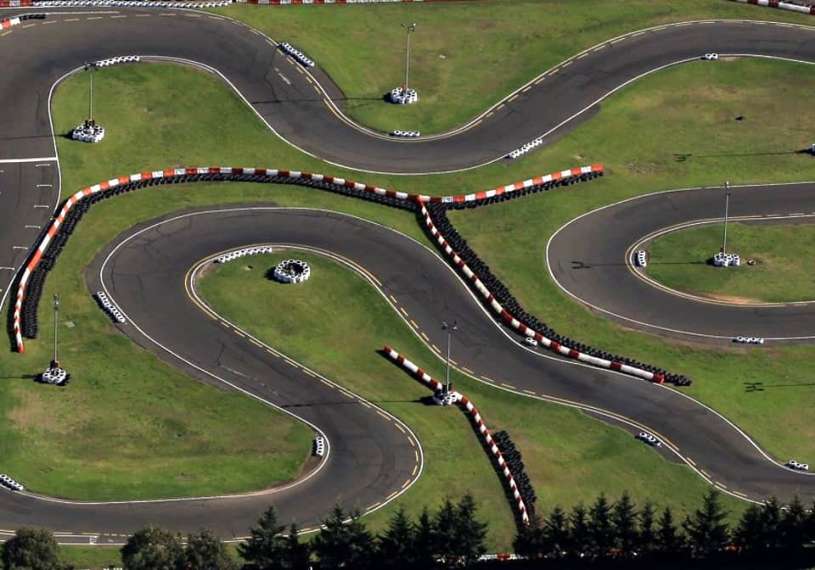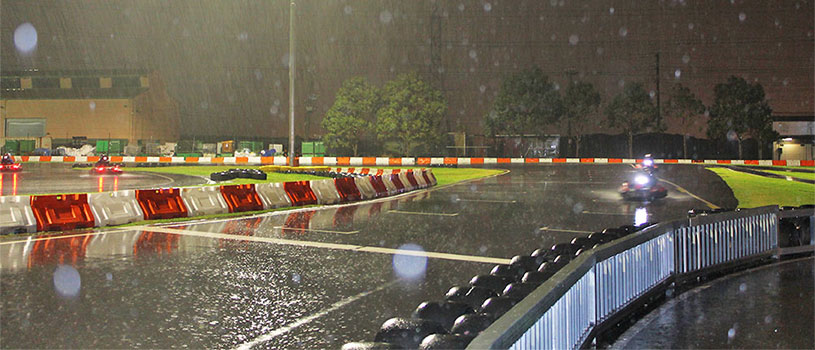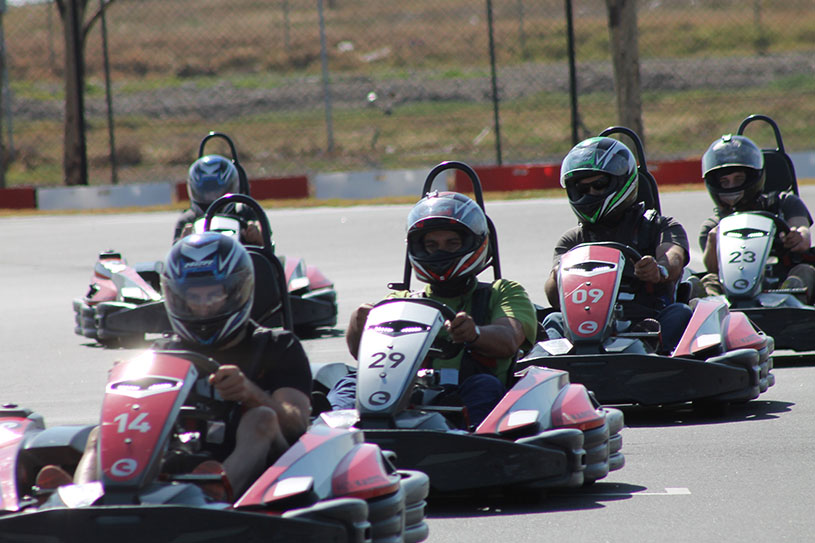Think you know go karting? Think again!
Go karting is fun — but there’s way more to it than just putting your foot down and chasing that need for speed. As a form of motorsport, karting has a deep history, crazy technology, and more strategy than you might expect.
We’ve pulled together 10 interesting facts about go karts that will change the way you see the thrill of racing. Whether you're a first-time kart racer or a regular at the go karting track, these insights will give you a new appreciation for the sport.
INTERESTED IN Parties and events at Ace Karts?
1. Go karting was invented by a former fighter pilot
In 1956, a hot rodder and a race car builder by the name of Art Ingels built the world’s first go kart. He worked at Kurtis Kraft, a company that specialised in building race cars. Ingels’ simple yet effective design used a small lawnmower engine and a lightweight frame, creating a new category of racing that quickly caught on.
Art Ingels is generally accepted to be the father of karting, and his homemade creation sparked an entirely new karting world. His invention led to the formation of racing leagues and the global phenomenon that karting is today.
2. Go karts paved the way for modern motorsport safety
Many motorsport safety innovations, like impact-absorbing barriers and improved helmet requirements, were first tested in karting before making their way to Formula 1. The low-stakes nature of karting races allows manufacturers and engineers to refine safety features before implementing them in higher forms of motorsports.
Organisations like the Commission Internationale de Karting (CIK) and the Fédération Internationale de l’Automobile (FIA) set regulations for karting tracks and equipment to ensure driver safety. These governing bodies help maintain karting as a safe and competitive motorsport for all skill levels. With our comprehensive go kart safety regulations, our drivers are as safe as can be.
3. Karting is more physically demanding than it looks
Don’t let their size fool you — go karts require serious physical effort to drive. The low centre of gravity means you experience high G-forces through corners, testing your strength and endurance. The lack of power steering forces drivers to use raw upper-body strength to control the kart.
Many professional racers, including Michael Schumacher, Max Verstappen, and Lewis Hamilton, credit kart racing for developing their core strength, reflexes, and stamina. The intense workout helps prepare drivers for the physical rigours of professional motorsports.

4. Go karts have no suspension
Unlike regular cars, go karts rely on offset chassis flex instead of a suspension system. This makes them incredibly responsive to driver inputs but also means you feel every bump and vibration from the track.
Some karting tracks are smoother to compensate, but learning to handle a kart without suspension is a key skill for any serious racer. Mastering this challenge is one of the reasons why kart racing is such a great stepping stone for future professional drivers.
5. Weight distribution is key to fast lap times
In karting, how you position your body matters. Shifting your weight slightly can impact how a racing kart handles corners, affecting grip and speed. Professional racers know that even the smallest adjustments can make a big difference in lap times.
If you want to reach speeds faster than your opponents, pay attention to how you distribute your weight when braking, turning, and accelerating. Good weight management will help you carry more speed through corners and reduce unnecessary resistance.
6. You can drift a go kart – but it’s not always the fastest way around a corner
While drift karts exist for show, most kart races are won with smooth, controlled steering — not slides. Drifting might look cool, but in a race, it usually slows you down because it sacrifices grip and momentum.
The best kart racers focus on smooth cornering and precise control. Instead of skidding sideways, they use calculated braking and acceleration to maintain traction and carry maximum speed through turns.

7. Racing in the wet requires a completely different strategy
When safety’s as tight as it is on our tracks, trust us, the go kart races don’t stop for rain.
In wet conditions, standard kart circuits become slippery, meaning drivers need to adjust their technique. The best racing kart drivers know that the traditional racing line doesn’t work in the rain — they need to search for grip off the beaten path.
Kart racing is generally accepted to require careful throttle control, earlier braking, and an understanding of how water affects tyre grip. Wet-weather karting is an entirely different skill set that separates the best from the rest.
8. There are go karting tracks in extreme locations
Some of the largest kart races happen on unique tracks, including circuits on frozen lakes, military airstrips, and even aircraft carriers. Racing in these environments challenges drivers with unpredictable surfaces and extreme weather conditions.
Karts and tracks vary worldwide, with some indoor and outdoor go kart tracks offering extreme terrain to push drivers to their limits. No matter where you go karting, adaptability is a key skill to master.
9. A good racing line is more important than raw speed
Even the fastest go karts can’t win without karting world championship-level technique. Proper positioning and braking at the right moment make all the difference.
Many international kart federation guidelines emphasise cornering skills, making it a stepping stone to the higher levels of motorsports. A well-chosen racing line can make a slower kart outperform a faster one.

10. Night racing feels faster than daytime racing
The contrast of night racing tricks your brain, making your go kart racing experience feel even more intense. The reduced visibility and track lighting create a heightened sense of speed that makes night races uniquely thrilling.
Many Australian karting venues offer floodlit tracks, adding to the fun pastime of late-night karting. Cooler air at night also improves engine performance, making go karts feel even more responsive. At Ace Karts, we offer an unbeatable night racing experience that lets you push your limits under the floodlights. There’s something special about tearing down the track with only the glow of the lights guiding your way—it amplifies every turn, every straight, and every battle for position.
If you've never tried it before, night racing is an entirely different thrill. The glow of the floodlights, the cool evening air, and the heightened sense of speed make it a must-try for any karting enthusiast. But there are plenty more reasons why you should try night go karting in Melbourne tonight.
Experience real life racing now
Time to test your race IQ at Ace Karts!
Now that you’ve got all this information on facts about go karting, why not put them to the test? Ace Karts is the ultimate place to feel the thrill of racing firsthand. Whether you're a first-time driver or a seasoned karting world competitor, we’ve got the premium racing karts and outdoor go kart tracks to give you an unforgettable experience.
Book your next race today and experience the difference!
Must Read
Go Karting vs Car Racing
Discover the thrills of kart racing without breaking the bank
If you’re someone who dreams of hitting the racetrack in a high-performance car but fi ...
Read more